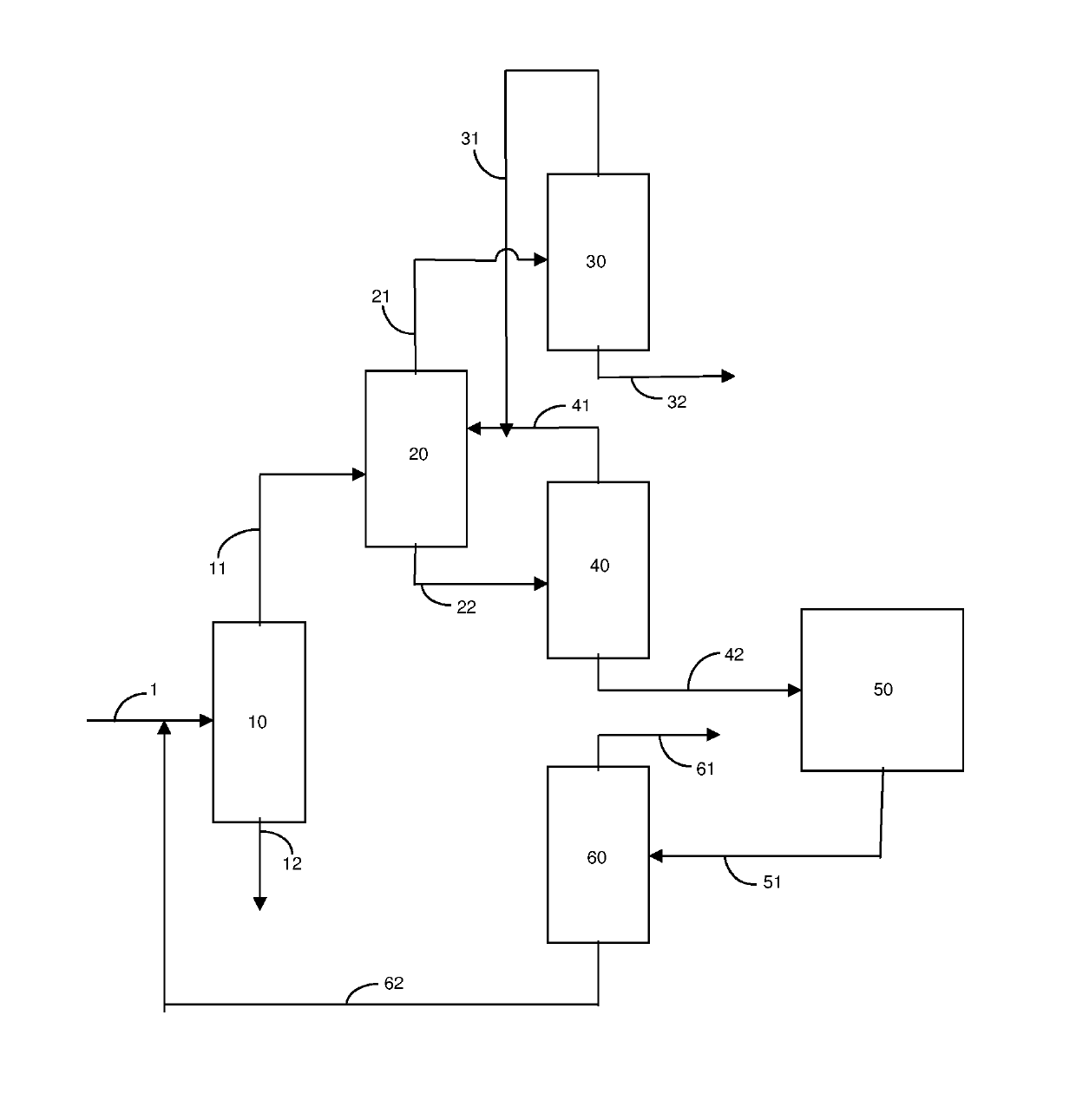Process for recovering para-xylene using a metal organic framework adsorbent in a simulated moving-bed process
a metal organic framework and para-xylene technology, applied in the direction of separation processes, sustainable manufacturing/processing, bulk chemical production, etc., can solve the problems of difficult separation of c8 aromatics, limited px production, and high energy consumption of distillation
- Summary
- Abstract
- Description
- Claims
- Application Information
AI Technical Summary
Benefits of technology
Problems solved by technology
Method used
Image
Examples
example
[0051]A mixture of xylenes containing PX, MX, OX and EB was passed over the adsorbent (zeolite or MOF) pre-saturated with the desorbent at various temperatures. Once the adsorbtion was complete, evident from pX breakthrough and effluent composition reaching the feed composition, the bed was subject to a desorbent to remove the adsorbed species. For the zeolite case, toluene was used as the desorbent and for the MOFs case n-heptane was used as the desorbent. The process was repeated over 3 adsorption-desorption cycles.
[0052]Table 1 shows the pX selective features of several MOFs as compared to the zeolites used in current practice. Table 2 shows the boiling point difference between the xylenes and the desorbents. The larger difference will lead to easier separation, resulting in energy savings.
[0053]
TABLE 1Summary of Xylene Separation PerformancesBreakthroughTemperatureCapacityPX / PX / Material[° C.][mmol / g]EBMXPX / OXMIL-125 (Ti)—NH2501.31.31.51.6Heptane DesorbentMIL-140b (Zr)501.22.11.6...
PUM
| Property | Measurement | Unit |
|---|---|---|
| wt % | aaaaa | aaaaa |
| boiling point | aaaaa | aaaaa |
| boiling point | aaaaa | aaaaa |
Abstract
Description
Claims
Application Information
 Login to View More
Login to View More - R&D
- Intellectual Property
- Life Sciences
- Materials
- Tech Scout
- Unparalleled Data Quality
- Higher Quality Content
- 60% Fewer Hallucinations
Browse by: Latest US Patents, China's latest patents, Technical Efficacy Thesaurus, Application Domain, Technology Topic, Popular Technical Reports.
© 2025 PatSnap. All rights reserved.Legal|Privacy policy|Modern Slavery Act Transparency Statement|Sitemap|About US| Contact US: help@patsnap.com

